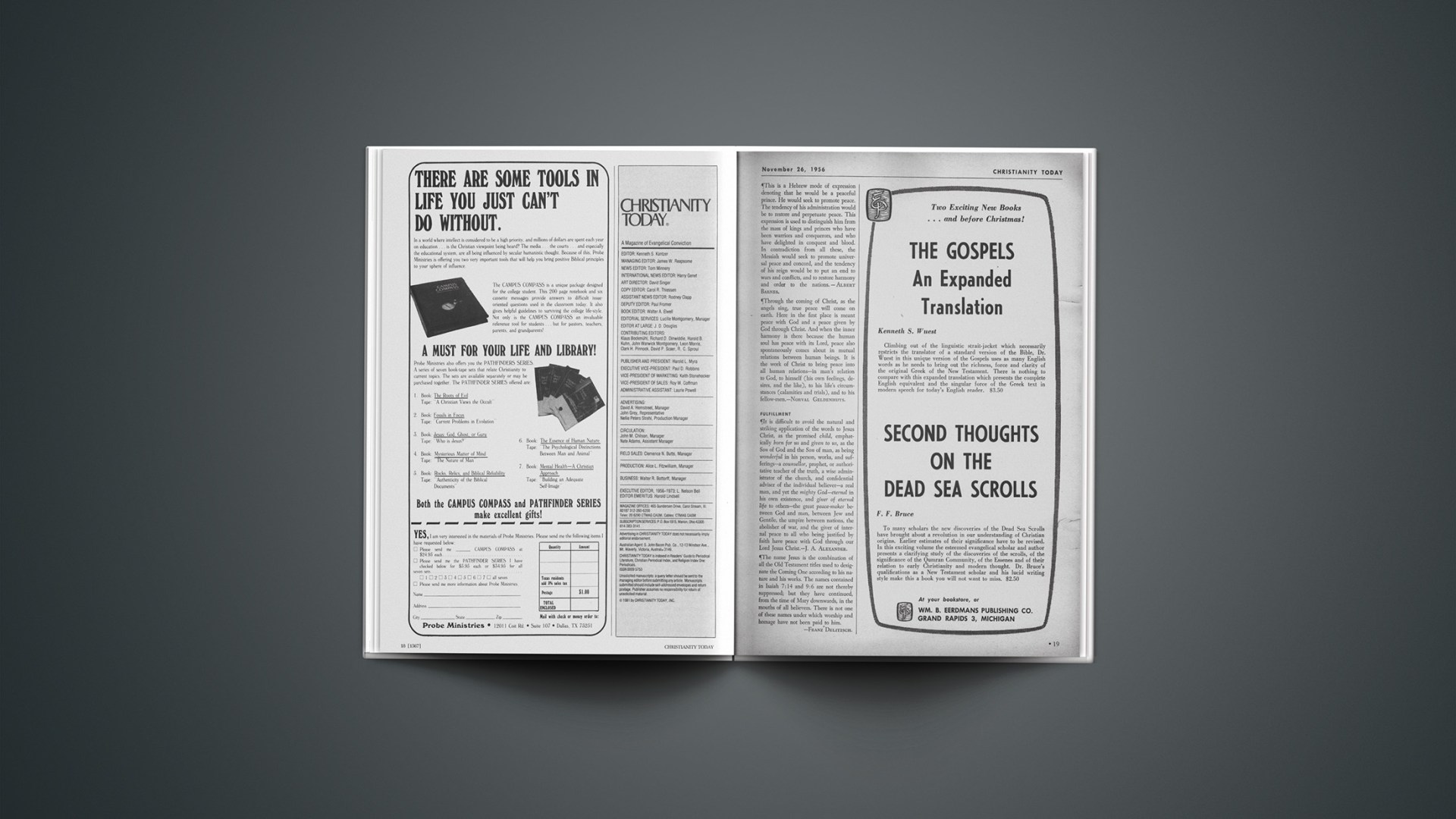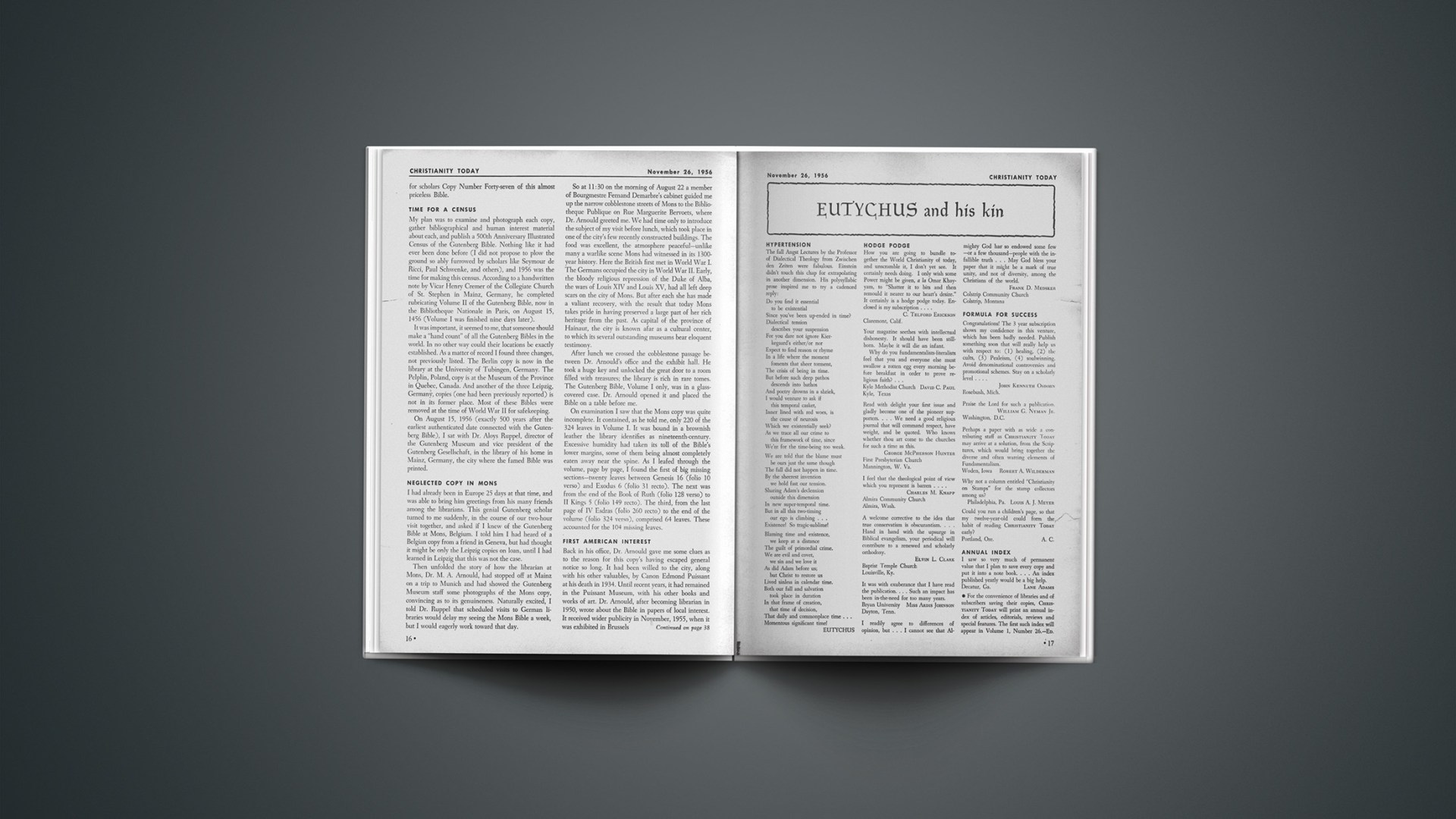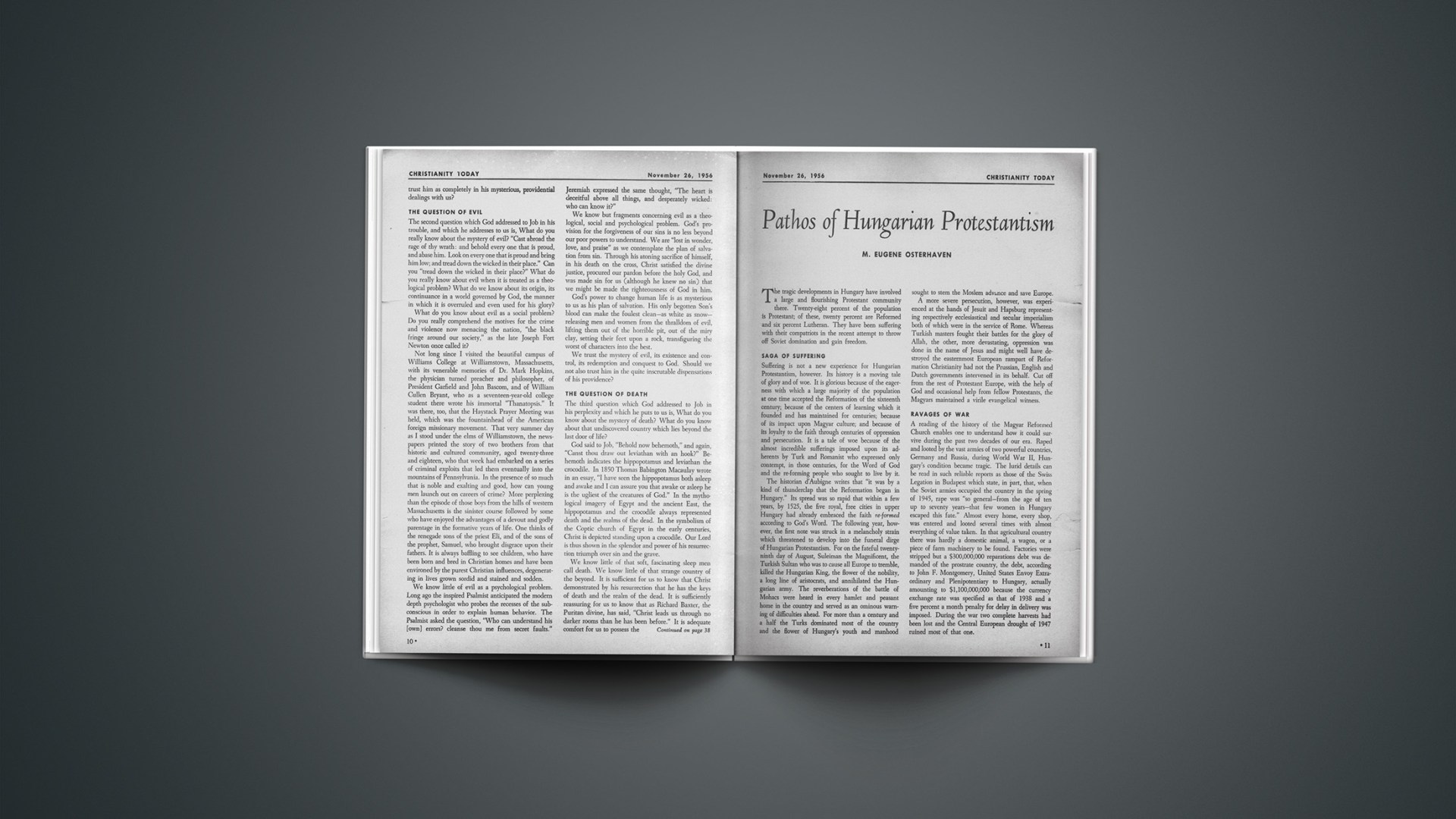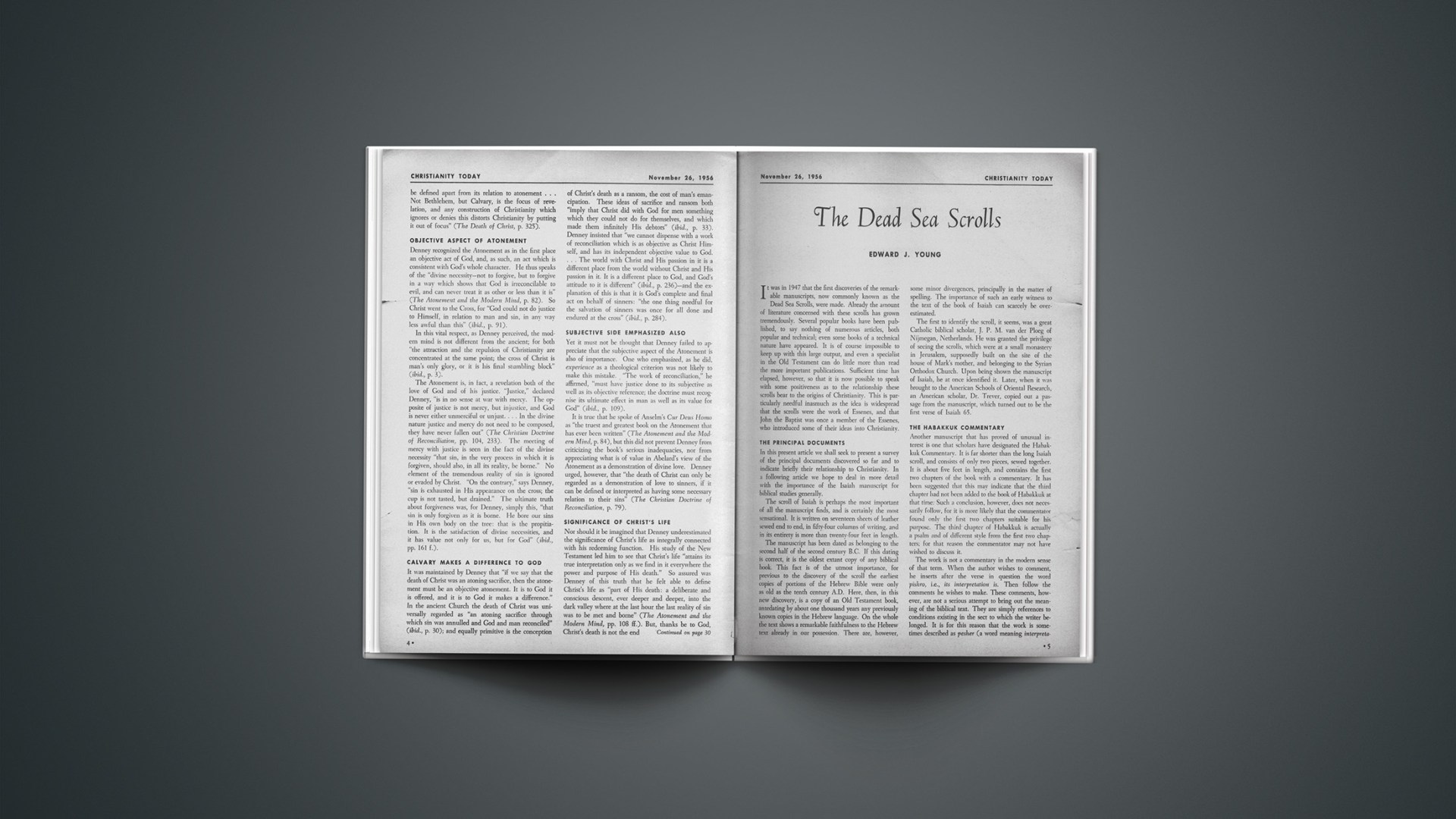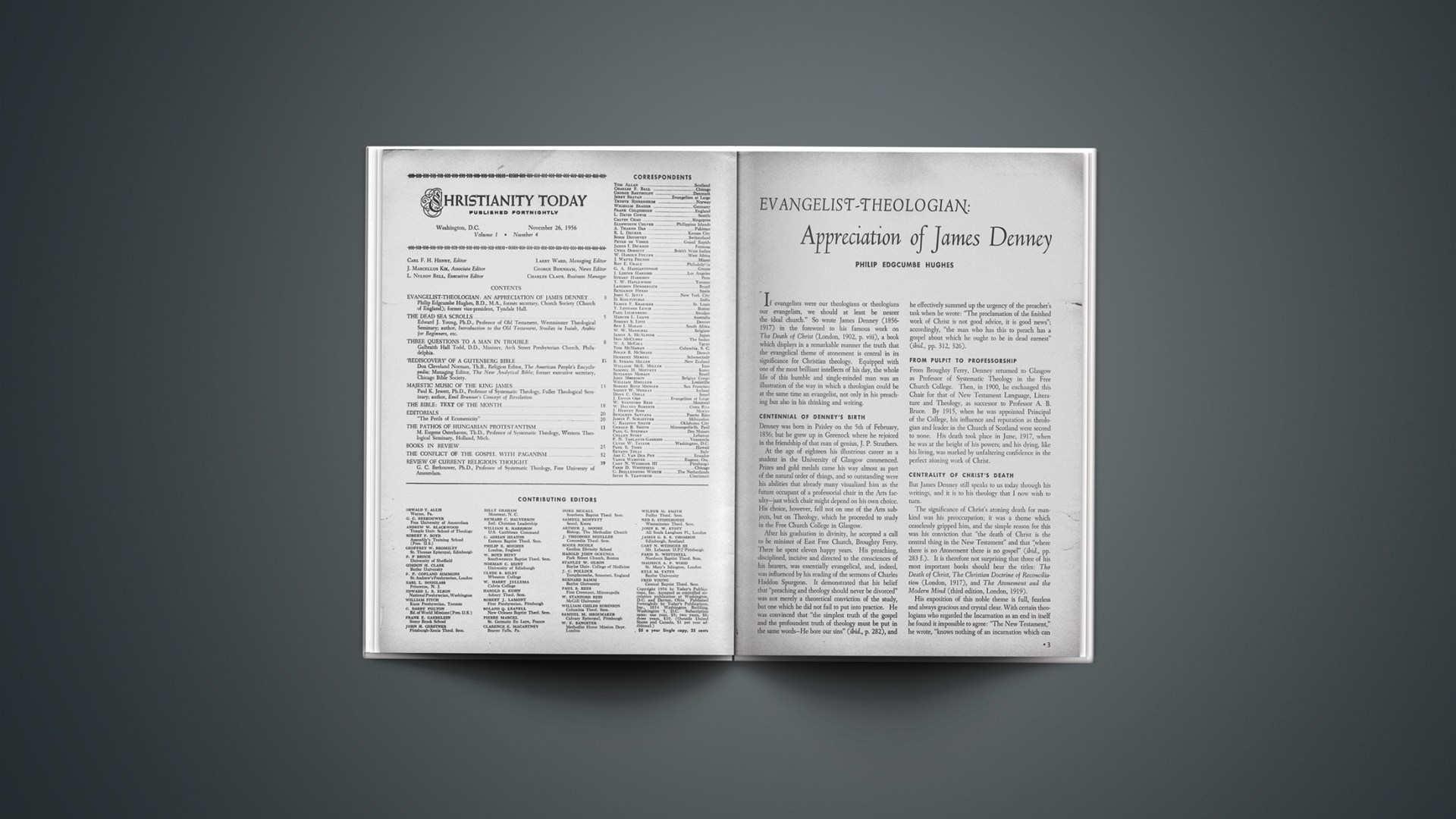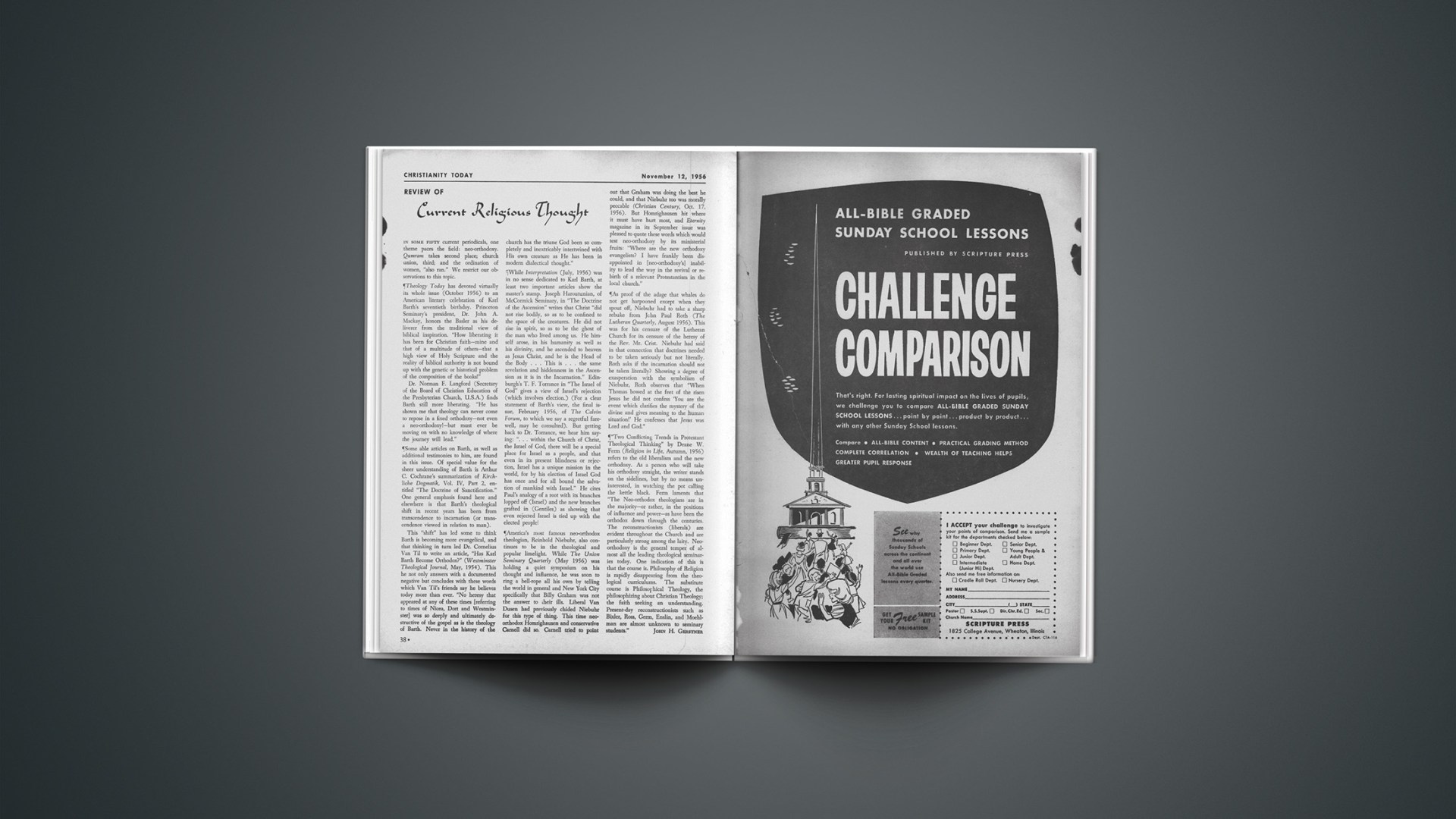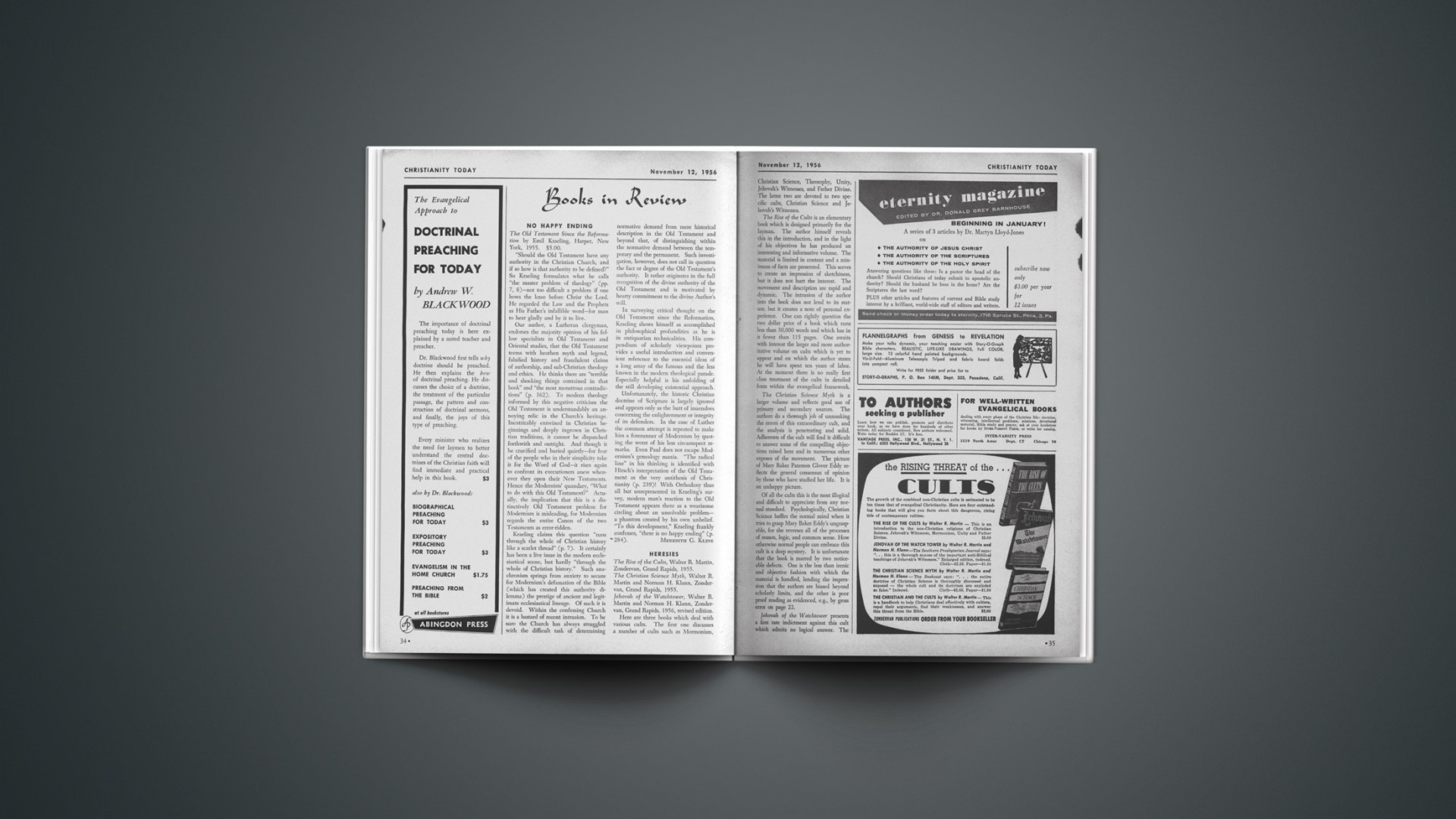For unto us a child is born, unto us a son is given: and the government shall be upon his shoulder: and his name shall be called Wonderful, Counselor, the mighty God, the everlasting Father, the Prince of Peace (Isaiah 9:6).
In the text there is a constellation of titles; and such a constellation, as, were it not for the blindness of the human mind and the obstinacy of the human heart, one should think, would be sufficient to confound all the Arianism and the confraternity of heresies upon the Divinity of Christ, to the end of the world.—HORAE SOLITARIAE.
It is manifestly impossible to associate these words of majestic prophecy with any other than the Messiah himself, and the Christian Church throughout the centuries has found here the certain attributes of the living and victorious King of the hearts of men, the only One able to deliver and to save the soul in its desperate plight and to lead men into the new and better way of the commandment of God.—W. FITCH.
When it is said that his name should be called, it does not mean he should actually bear these names in real life, but merely that he should deserve them, and that they would be descriptive of his character.—J. A. ALEXANDER.
He is given, freely given, to be all in all to us, which our case, in our fallen state, calls for. God so loved the world, that he gave him. He is born to us, he is given to us, us men, and not to the angels that sinned: it is spoken with an air of triumph, and the angel seems to refer to these words in the notice he gives to the shepherds: Unto you is born, this day, a Saviour.—MATTHEW HENRY.
Wonderful
Consider him in any point of view, either as God or man, or as God and man in one person; he is altogether wonderful. If we contemplate his works, both of creation and redemption, we shall find some legible characters of the wonderful Lord indelibly written upon them all.—HORAE SOLITARIAE.
By the first title he arouses the minds of the godly to earnest attention, that they may expect from Christ something more excellent than what we see in the ordinary course of God’s works, as if he had said, that In Christ are hidden the invaluable treasures of wonderful things (Col. 2:3). And, indeed, the redemption which he has brought surpasses even the creation of the world.—CALVIN.
Counsellor
There is no need for him to surround himself with counsellors; but without receiving counsel at all, He counsels those who are without counsel.—FRANZ DELITZSCH.
This word has been sometimes joined with “Wonderful,” as if designed to qualify it thus—wonderful counsellor. But it expresses a distinct attribute or quality. The name counsellor here denotes one of honourable rank; qualified to advise or counsel; one who is fitted to stand near princes and kings as their advisor. It is expressive of great wisdom, and of qualifications to guide and direct the human race.—ALBERT BARNES.
Mighty God
That the same person should be “the mighty God” and a “child born,” is neither conceivable nor possible, nor can be done, but by the union of the divine and human natures in the same person.—JOHN OWEN.
He is the mighty God. As he has wisdom, so he has strength, to go through with his undertaking; he is able to save to the utmost; and such is the work of the Mediator, that no less a power than that of the mighty God could accomplish it.—MATTHEW HENRY.
For if we find in Christ nothing but the flesh and nature of man, our glorifying will be foolish and vain, and our hope will rest on an uncertain and insecure foundation; but if he shows himself to be to us God and the mighty God, we may now rely on him with safety. With good reason does he call him strong or mighty, because our contest is with the devil, death, and sin, enemies too powerful and strong, by whom we would be immediately vanquished, if the strength of Christ had not rendered us invincible.—CALVIN.
For if we find in Christ nothing but the flesh and nature of man, our glorifying will be foolish and vain, and our hope will rest on an uncertain and insecure foundation; but if he shows himself to be to us God and the mighty God, we may now rely on him with safety. With good reason does he call him strong or mighty, because our contest is with the devil, death, and sin, enemies too powerful and strong, by whom we would be immediately vanquished, if the strength of Christ had not rendered us invincible.—CALVIN.
Everlasting Father
The title Eternal Father designates him, however, not only as the possessor of eternity, but as the tender, faithful, and wise trainer, guardian, and provider for his people even in eternity.—FRANZ DELITZSCH.
His fatherly care of his people and tenderness toward them are everlasting. He is the author of everlasting life and happiness to them, and so is the Father of a blessed eternity to them. He is the Father of the gospel-state, which is put in subjection to him. He was from eternity, Father of the great work of redemption: his heart was upon it; it was the product of his wisdom, as the Counsellor; of his love, as the everlasting Father.—MATTHEW HENRY.
The prophet is describing the nature of the Messiah, and therefore gives us his name, as the name of his nature. He is not describing the mode of his existence with the Father and Holy Spirit, but his essence as true and very God. For this reason, the application of this name to Jesus Christ by no means militates against the doctrine of the Trinity, or the peculiar relation of Christ in that Trinity; but establishes and confirms it. For if Christ be the Everlasting Father, and if there is but one God, the Father; then Christ being God, that divine person, who is usually styled the Father, must be of one essence with him, or there would be two Gods. And if these divine persons be of one and the same essence, they may bear the character of Father to all their creatures relatively, which they do not bear to each other, considered in the sacred essence, respectively. Thus the I ord Christ, though he is not the Father respecting the personality in the Godhead, is very properly and justly denominated Father respecting the universe of beings; for he created them all, as well as supports them all, by his power.—HORAE SOLITARIAE.
Prince Of Peace
The pole star of this constellation of titles, “Prince of Peace,” speaks to the deepest needs of the human heart; it is of utmost comfort and reassurance to every believer individually, and to the people of God as a community. In the first instance, it contained a particularly desirable promise to Israel. The nation was constantly harassed by war, their little land being the cockpit in which the surrounding great powers often waged their battles. Peace was the supreme longing of the true Israelite. It was promised in the reign of the Messiah. How appropriate also, in that respect, is this title of Christ to our own war-ridden generation! Through the reign of the Prince of Peace alone will real peace come to this earth, not only for Israel, but all nations.—HERBERT F. STEVENSON.
This is a Hebrew mode of expression denoting that he would be a peaceful prince. He would seek to promote peace. The tendency of his administration would be to restore and perpetuate peace. This expression is used to distinguish him from the mass of kings and princes who have been warriors and conquerors, and who have delighted in conquest and blood. In contradiction from all these, the Messiah would seek to promote universal peace and concord, and the tendency of his reign would be to put an end to wars and conflicts, and to restore harmony and order to the nations.—ALBERT BARNES.
Through the coming of Christ, as the angels sing, true peace will come on earth. Here in the first place is meant peace with God and a peace given by God through Christ. And when the inner harmony is there because the human soul has peace with its Lord, peace also spontaneously comes about in mutual relations between human beings. It is the work of Christ to bring peace into all human relations—in man’s relation to God, to himself (his own feelings, desires, and the like), to his life’s circumstances (calamities and trials), and to his fellow-men.—NORVAL GELDENHUYS.
Fulfillment
It is difficult to avoid the natural and striking application of the words to Jesus Christ, as the promised child, emphatically born for us and given to us, as the Son of God and the Son of man, as being wonderful in his person, works, and sufferings—a counsellor, prophet, or authoritative teacher of the truth, a wise administrator of the church, and confidential adviser of the individual believer—a real man, and yet the mighty God—eternal in his own existence, and giver of eternal life to others—the great peace-maker between God and man, between Jew and Gentile, the umpire between nations, the abolisher of war, and the giver of internal peace to all who being justified by faith have peace with God through our Lord Jesus Christ.—J. A. ALEXANDER.
The name Jesus is the combination of all the Old Testament titles used to designate the Coming One according to his nature and his works. The names contained in Isaiah 7:14 and 9:6 are not thereby suppressed; but they have continued, from the time of Mary downwards, in the mouths of all believers. There is not one of these names under which worship and homage have not been paid to him.
—FRANZ DELITZSCH.

